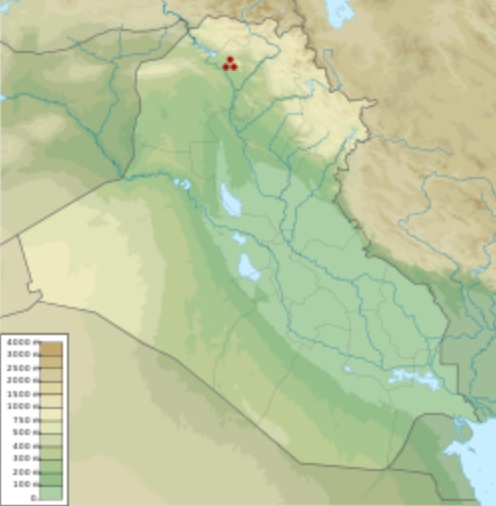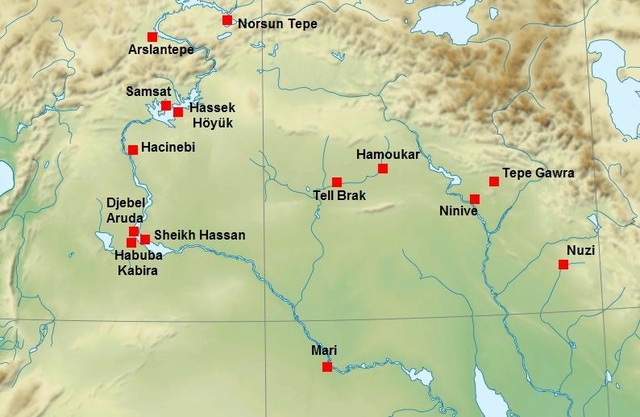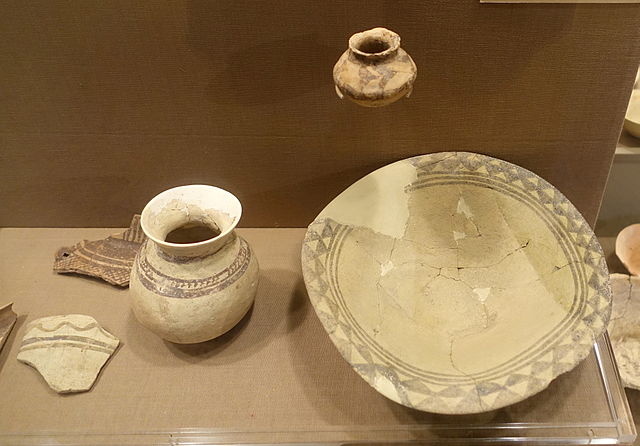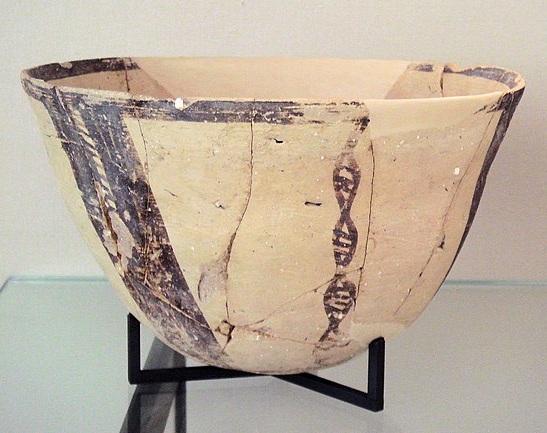
| TEPE GAWRA
Tepe Gawra within Iraq Location : Nineveh Province, Iraq
Region : Northern Mesopotamia
Coordinates : 36°29'44 N 43°15'37 E
Type : tell
Site notes :
Excavation dates : 1927, 1931, 1932
Archaeologists : E.A. Speiser
Tepe Gawra (Kurdish for "Great Mound") is an ancient Mesopotamian settlement in the Mosul region of northwest Iraq that was occupied between 5000 and 1500 BC. It contains remains from the Halaf period, the Ubaid period, and the Uruk period (4000–3100 BC). Tepe Gawra contains material relating to the Halaf-Ubaid Transitional period c. 5,500–5,000 BC.
History of archaeological research :
Tepe Gawra on the map of Uruk period archaeological sites in Upper Mesopotamia and Anatolia A brief exploratory dig was performed by Austen Layard before 1850. The site was formally excavated in 1927, 1931, and 1932 for a total of 8 months by archaeologists from a joint expedition of the University of Pennsylvania and the American Schools of Oriental Research, led by Ephraim Avigdor Speiser.
In 2001, Mitchell Rothman reanalyzed the data from previous excavations that did not use precise stratigraphic techniques. He considerably clarified the stratigraphy of the site.
Tepe Gawra and its environment :
Northern Ubaid pottery from Tepe Gawra and other sites Tepe Gawra lies near the ancient site of Nineveh, 2 miles (3.2 km) from Khorsabad and 15 miles (24 km) northeast of the modern city of Mosul. The tell or settlement mound at Tepe Gawra is 120 metres (390 ft) in diameter and 22 metres (72 ft) high.
Tell Arpachiyah is a contemporary Neolithic site nearby.
Occupation history :
Early Ubaid period pottery, 5100 - 4500 BC, Tepe Gawra. Louvre Museum DAO 3
Columbella Rustica snail shell necklace from Tepe Gawra (modern day Iraq) 4000 BCE Excavations at Tepe Gawri revealed 16 levels showing that the Tepe Gawra site was occupied from approximately 5000 BC to 1500 BC. They include the earliest known temple to be decorated with pilasters and recesses. The Gawra Period (3500–2900 BC) is named for the site.
Earliest
use of gold :
Several objects from levels 12 to 8 (mid-fourth to early-third millennium BC) at Tepe Gawra were made of arsenical copper, which is quite early for Mesopotamia. Similar objects are also found in Fara (Shuruppak), also dating from Jamdat Nasr period.
Source :
https://en.wikipedia.org/ |




_4000_BCE.jpg)